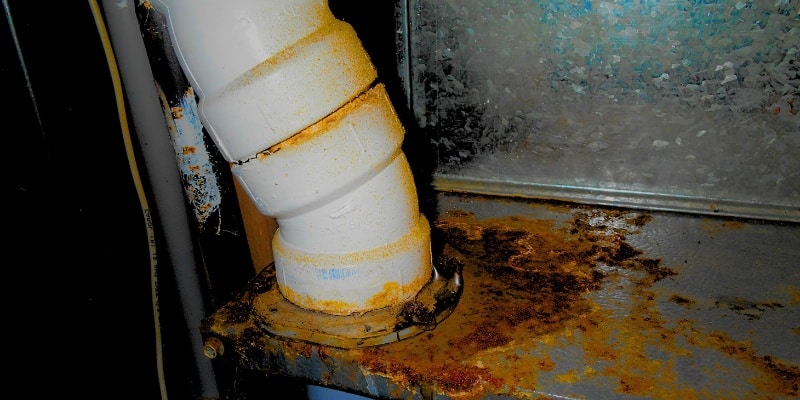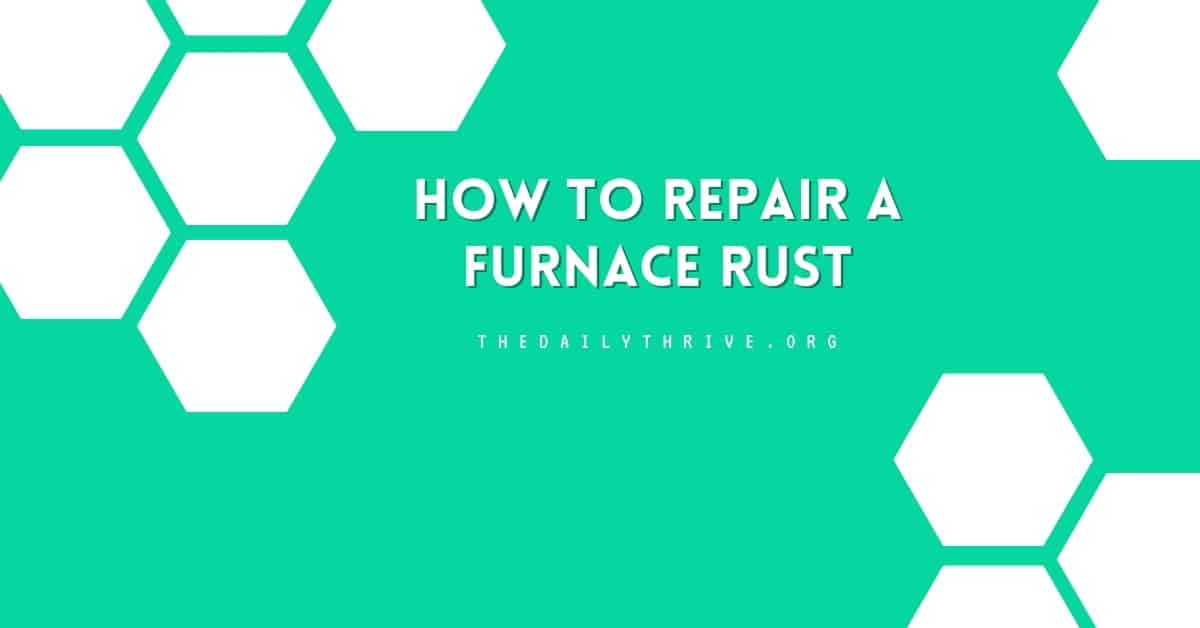Rust: It’s a silent invader, slowly but surely eating away at our precious appliances, including furnaces. A furnace isn’t just about warmth; it’s about ensuring a home remains a comfortable haven during those cold winter months. However, like all equipment, it’s prone to wear and tear. One of the most common problems associated with furnaces is rust. Left unchecked, rust can become a severe hazard. In this article, we will explore how to repair furnace rust, ensuring the longevity and safety of your heating system.
Why addressing furnace rust is critical? It is vital to understand the importance of tackling rust as soon as it’s noticed. Ignoring rusted furnaces shortens the unit’s lifespan. It can lead to hazardous situations like gas leaks.
Common Causes of Rust on a Furnace
Rust in a furnace can be concerning, as it might lead to potential failures and inefficiencies in the system. Several factors can cause rust to form in a furnace. Here’s a breakdown:
- Condensation
The most common reason for furnace rust is condensation. High-efficiency or condensing furnaces are designed to extract as much heat as possible. In doing so, they produce condensation. If this condensation doesn’t drain properly, it can sit in the furnace, leading to rust.
Older, standard-efficiency furnaces can also produce condensation if the flue gases are cooled below their dew point inside the flue vent, leading to condensation and subsequent rust.
- External Moisture
If your furnace is in a damp area, like a basement, that tends to flood or has high humidity levels, the moisture in the environment can contribute to rusting. This is especially true if the furnace doesn’t have adequate clearance from the floor or is directly exposed to water.
- Inadequate Venting
If the furnace isn’t vented properly, it can cause combustion gases to become trapped. This can lead to moisture accumulation, which, over time, can result in rust.

- Clogged Drain Lines
High-efficiency furnaces produce condensate that needs to be drained away. If the drain lines get clogged, the condensate can back up and cause rust.
- Faulty Heat Exchanger
A cracked heat exchanger can introduce moisture into areas of the furnace that shouldn’t be wet, leading to rust. A faulty exchanger increases the risk of rust and can also be a significant safety concern, as it can leak combustion gases, including carbon monoxide, into the home.
- Improper Combustion
If the furnace doesn’t burn fuel properly, it can lead to soot buildup and increased condensation, which can cause rust.
- Old Age
As furnaces age, their components can wear out and degrade, making them more susceptible to rust.
Identify the Extent of Rust
Before jumping into repairs, it’s imperative to gauge the damage:
- Surface Rust: This is mild rusting that hasn’t deeply penetrated. Typically, it’s a sign of early damage and can be handled easily.
- Deep Rust: More worrying, this indicates that the rust has made significant inroads into the furnace, possibly affecting its structural integrity.
Before embarking on any repair:
- Make sure the furnace is turned off.
- Disconnect any gas or electricity supply to prevent accidents.
- Always equip yourself with safety gloves, goggles, and a face mask to protect against rust particles.
Gathering the right tools ensures a smooth repair process:
- Wire brush or sandpaper for scrubbing.
- Rust converter to neutralize rust.
- Rust-resistant primer and paint.
- Clean cloth or rag for wiping.
- Essential safety gear: gloves, goggles, and mask.
The Furnace Repair Rust Procedure
Now, let’s delve into the actual repair process:
- Inspect and Clean the Area: Start by identifying all rusted sections. Clear away any dust or debris to ensure a smooth working surface.
- Remove Surface Rust: Employ the wire brush or sandpaper, scrubbing away all visible rust. Post-scrubbing, use a clean cloth to wipe away rust remnants.
- Employ a Rust Converter: Rust converters are agents that transform rust into a stable compound, preventing further rusting. Apply it evenly, strictly following the manufacturer’s instructions. Wait for it to dry.
- Priming Time: With the rust addressed, apply a high-quality, rust-resistant primer. This provides a good base for the paint to adhere to. Allow it to dry thoroughly.
- Final Painting: Choose a rust-resistant paint that matches the furnace’s original color. Paint over the primed area evenly and then give it ample time to dry.
Regular Maintenance is Key
To prevent future rust issues:
- Periodically inspect your furnace for any signs of wear.
- Control humidity levels in your home, as excessive moisture can fast-track rusting.
- Opt for an annual professional inspection, catching problems before they escalate.
When It’s Time to Call in the Pros
There are situations when DIY might not cut it:
- If rust damage seems too extensive.
- When uncertain about the depth or nature of the rust.
- And, most crucially, if there are signs that the furnace’s efficiency or safety is compromised.
In Conclusion
Maintaining a rust-free furnace isn’t just about aesthetics; it’s about ensuring the safety and efficiency of a critical home appliance. The old saying goes, “A stitch in time saves nine.” Addressing furnace rust promptly can save you from potential dangers and costly replacements.
Additional Tips: Always lean on trusted product brands known for rust treatment and strictly adhere to manufacturer guidelines during repairs and painting. Safety and diligence are the names of the game.






